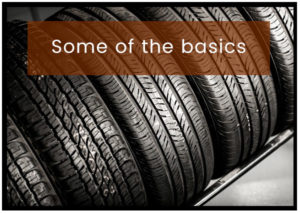Why are Motorcycle Tyres So Expensive
The following article will portray an important topic that is “Why are motorcycle tyres so expensive?” and we will discuss it in more detail within the article:
You might not have thought about this the last time you’ve used a motorcycle tire changer, but out of the thousands of pieces that your bike is made of, tyres are the only ones that actually touch the ground.
1. Keep you in Safe Contact
It’s true that such a piece of machinery is a complex system in which everything works together, but no matter how much power the engine has or how much style the bike ensures, the tyres are the sole reason that keeps you in safe contact with the pavement. For this reason, you can assume that these rubber elements play a crucial role in your rides, so they do deserve special attention.
2. Styled and Designed Differently
That’s why it’s important to take into consideration the benefits, limitations, and options that each model has to offer before choosing the next pair. Often times they are styled and designed differently, which means that they can also have varying price tags.
3. They are not the Cheapest Purchase
In case you’ve been browsing a bit, you probably noticed that motorcycle tyres are not the cheapest purchase you can make. In the next lines, we will take a look at why this is, but in order to understand what makes motorcycle tyres special, you should know a bit more about how they are made.
That’s why we’ll go through some details on this matter as well before discussing the reasons for which you will probably pay a bit more than expected for a truly wonderful set of tyres. Regarding this helmet dealers in mumbai are do their job so well.
Some of the basics
1. Think about your Riding needs/wants
No matter if you are a new rider or an experienced one, there are many different things you should consider when thinking about getting a set of motorcycle tyres. There are so many models available on the market, that you might even feel a bit overwhelmed at first. However, before setting your eyes on a specific option, you must think about your riding needs/wants.
2. Come with some Handling Characteristics
The tread is one of the most popular aspects of a motorcycle tire. The term refers to that part of the tire that comes in direct contact with the pavement. Patterns can vary quite a lot, from slick ones that ensure speed but less traction, to those made for great off-road and muddy experiences.This aspect of a tire can also come with some handling characteristics, as well as with different levels of water and dirt evacuation. This is why we’ve mentioned that before choosing any particular tire model, you need to consider your own needs and riding preferences.
3. Ensures a Sturdy Foundation
A less-known part of the tire is the bead, which defines the portion of a tire that comes in direct contact with the wheel. Made of a steel bead wire and a section of what is known as a bead filler, this part of a tire’s construction ensures a sturdy foundation for the sidewalls and prevents any potential risk of it slipping off the rim.
4. Carcass & Sidewall
The next part of a motorcycle tire you might want to know a little bit more about is the carcass. This piece is the skeleton upon which the entire tire is constructed, and it can come in two different forms, either bias-ply or radial. These two terms refer to how the tire’s guts are made.
The bias-ply alternative uses cords of fiber that run diagonally, from bead to bead, while the radial models employ steel reinforcing belts that are placed perpendicular to the bead, as well as underneath the carcass.
Last, but certainly not least, the sidewall is an integral and important part of the tire, that works to ensure its longevity, handling, and performance. The sidewall is defined as the part between the tread and the bead that supports the carcass and indicates how much weight the tire can sustain. It also defines the lean-angle and it can be used to add a cool style to your ride.
Options can vary from classic white walls to vintage profiles or raised lettering, and these are just some of the models you’ll find on the market. But looks aside, the sidewall plays a very important role, from profile, height, or aspect ratio, to the way a bike receives feedback from the terrain, so you should not overlook it.
How are Motorcycle Tyres Made
With all of the information provided above, it shouldn’t come as a surprise that modern tire construction is, in fact, one of the most studied and scientifically-driven aspects of the motorcycle industry. World-renowned manufacturers that have a long history of tire-making behind are taking every step of the process very seriously.
And since you should know what it is that you are paying for, let’s take a look and see what the main steps are to create a set of tyres that bring adventure into your life. There are four stages of the production process, according to some manufacturers, and these include the preparation, the assembly, curing the tyres and, of course, quality control.
The preparation phase usually takes place in the offices, where digital schematics are designed and prepared in order to guide the computerized tooling and machinery found in the factories with high precision. The data gathered and transmitted in this step is crucial, since it’s also computer tracked in order to ensure the highest level of quality control.
Tyres made by well-known brands and manufacturers come with an individual computerized bar-code number that allows any kind of tracking the company might need to do, across each step of the production and assembly processes.
The next Three Steps
The construction of a radial tire is a two-step process: the carcass is built first, and then the reinforcing tread and plies are applied. The carcass construction begins using what is known as a tyre drum. This is a rotating cylinder that features a flexible center for the edges to be brought together.
Sheets of synthetic rubber and a casing ply containing fabric cords as well are then laid down on the drum. This step includes well over a dozen compounds added in various ways, until the tough, yet flexible sidewalls are shaped into a carcass. The second step begins with adding a strengthening cord in order to support the plies.
The tread plies are specifically engineered to provide both mechanical resistance and directional stability, all through casing plies and reinforcing tread plies. The third step, the curing one, is the process and chemical reaction that enables the tire to go from a plastic to an elastic state. This part also binds all the compounds and materials to the cords.
A mold is used to form the tire using steam and hot water, and the working temperature to get this done ranges between 150 and 190 degrees Fahrenheit. The curing process is a completely automated one and once it is done, quality control comes into play.
So why are Motorcycle tyres so Expensive
As you’ve seen in the previous sections of this article, the production process includes a lot of engineering, more than it usually does for car or truck tyres. Motorcycles only use 2 wheels, which implies less stability compared to cars. Therefore, these tyres need to be top-quality in order to keep the rider safe and to confirm the desired performance. The amount of money you intend to spend on new tyres should also depend on how you are going to use the motorcycle. If you are simply commuting for 5 or 10 miles every day, then an expensive set of tyres might not be necessary at all. The models on the market fall into many different price categories, so you can surely find something that can work well for a lower price.
But, if, you want to venture on highways for lots of miles, then you need to make sure your bike is equipped with great tyres that will withstand any challenge. Experienced riders say you should always go either for the tyres suggested by manufacturers, or for better ones.












